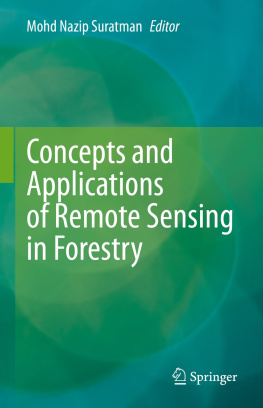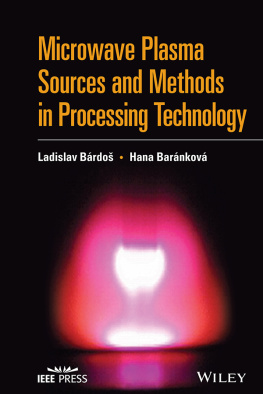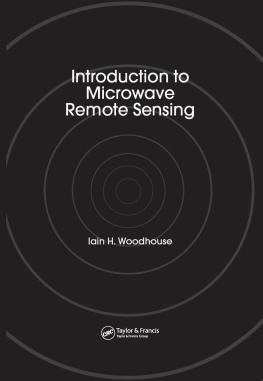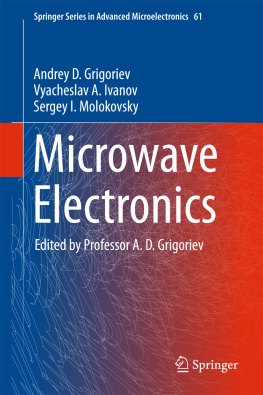Cover
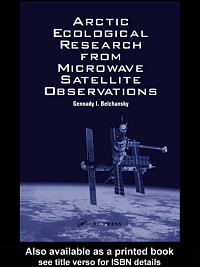
| title | : | Arctic Ecological Research From Microwave Satellite Observations |
| author | : | Belchansky, Gennady I. |
| publisher | : | CRC Press |
| isbn10 | asin | : | 0415269652 |
| print isbn13 | : | 9780415269650 |
| ebook isbn13 | : | 9780203008867 |
| language | : | English |
| subject | Ecology--Research--Arctic regions, Microwave remote sensing--Arctic regions. |
| publication date | : | 2004 |
| lcc | : | QH84.1.B45 2004eb |
| ddc | : | 577/.0911/3 |
| subject | : | Ecology--Research--Arctic regions, Microwave remote sensing--Arctic regions. |
Page i
ARCTIC ECOLOGICAL RESEARCH FROM MICROWAVE SATELLITE OBSERVATIONS
Page ii
This page intentionally left blank.
Page iii
ARCTIC ECOLOGICAL RESEARCH FROM MICROWAVE SATELLITE OSERVATIONS
Gennady I.Belchansky

CRC PRESS
Boca Raton London New York Washington, D.C.
Page iv
This edition published in the Taylor & Francis e-Library, 2005.
To purchase your own copy of this or any of Taylor & Francis or Routledges collection of thousands of eBooks please go to www.eBookstore.tandf.co.uk.
Library of Congress Cataloging-in-Publication Data
Belchansky, Gennady I.
Arctic ecological research from microwave satellite observations / Gennady I.Belchansky.
p. cm.
Includes bibliographical references (p.).
ISBN 0-415-26965-2 (alk. paper)
1. Ecology--Research--Arctic regions. 2. Microwave remote sensing--Arctic regions. I.
Title.
QH84.1B45 2004
577.09113dc22 2003065517
This book contains information obtained from authentic and highly regarded sources. Reprinted material
is quoted with permission, and sources are indicated. A wide variety of references are listed. Reasonable
efforts have been made to publish reliable data and information, but the author and the publisher cannot
assume responsibility for the validity of all materials or for the consequences of their use.
Neither this book nor any part may be reproduced or transmitted in any form or by any means, electronic
or mechanical, including photocopying, microfilming, and recording, or by any information storage or
retrieval system, without prior permission in writing from the publisher.
The consent of CRC Press LLC does not extend to copying for general distribution, for promotion, for
creating new works, or for resale. Specific permission must be obtained in writing from CRC Press LLC
for such copying.
Direct all inquiries to CRC Press LLC, 2000 N.W. Corporate Blvd., Boca Raton, Florida 33431.
Trademark Notice: Product or corporate names may be trademarks or registered trademarks, and are
used only for identification and explanation, without intent to infringe.
Visit the CRC Press Web site atwww.crcpress.com
2004 by CRC Press LLC
No claim to original U.S. Government works
ISBN 0-203-00886-3 Master e-book ISBN
ISBN - (OEB Format)
International Standard Book Number 0-415-26965-2 (Print Edition)
Library of Congress Card Number 2003065517
Printed on acid-free paper
Page v
PREFACE
Active (imaging radar) and passive (radiometer) microwave satellite systems are increasingly widely used in diverse fields of Arctic ecological research. Nevertheless, ecologists interested in remote sensing often have limited access to the full suite of physical and analytical techniques of microwave systems, data processing and ecological applications because a suitable reference book has not been produced.
This book provides a summary of main microwave satellite missions and applications for Arctic ecological research. It will be useful to undergraduate and postgraduate students, specialists with a background in microwave techniques and ecologists interested in applications of microwave active and passive remote sensing for tundra, boreal forest, and Arctic marine mammal studies.
Chapter 1 presents a brief introduction to Arctic ecological problems, the role of satellite remote sensing for systematic monitoring of Arctic ecosystems, elements of microwave remote sensing, data processing and applications.
Chapter 2 provides a summary of main characteristics and applications of Russian KOSMOSOKEAN (real aperture radar, multispectral optical and passive microwave radiometer instruments) polar-orbiting satellite series and ALMAZ, RESURSARKTIKA (synthetic aperture radar) satellite series. To a lesser extent, we also treat the main national and international microwave and multispectral optical satellite systems that are of particular interest to the Arctic research community.
Chapter 3 represents some results of Arctic sea-ice habitat studies using remotely sensed and tracking satellite data. The sea-ice types, concentration and surface temperature are analyzed based on passive and active microwave OKEAN-01 satellite data.
Chapter 4 includes an example of Arctic sea-ice variability studies in the BarentsKara Seas and adjacent parts of the Arctic Ocean using radar and passive microwave satellite measurements. Trends and sea-ice concentration are studied based on KOSMOS, OKEAN-01 and ALMAZ SAR satellite and historical data.
Chapter 5 gives the comparative analysis of multisensor satellite monitoring of Arctic sea-ice habitat using OKEAN-01, SSM/I and AVHRR satellite instruments. OKEAN-01 sea-ice type and concentration algorithms utilize radar and passive microwave information and a priori knowledge about the scattering and emission parameters of the basic sea-ice types.
Chapter 6 presents an example of boreal forest habitats studies using OKEAN-01 satellite data. Data processing and classification algorithms are based on the minimum loss criterion. These algorithms are used to classify satellite multispectral and microwave data into groups corresponding to different terrain cover of boreal forest habitat, and to evaluate information content of satellite data for discriminating boreal forest habitats.
Chapter 7 describes the evaluation of relative information content of ALMAZ-1, ERS-1 and JERS-1 SAR and Landsat-TM multispectral satellite data for identifying wet tundra habitats. Classification algorithms are based on minimum loss criteria to classify satellite data into groups corresponding to the different terrain covers of tundra habitats.
Chapter 8 summarises the results of investigating the influence of SAR data-focusing
Page vi
parameters on the efficiency of tundra habitat classification. The special software is used for synthesizing images from the raw SAR data. The focusing algorithm allows control of a spatial resolution by means of the multi-look technique, and provides a set of window functions for flexible adjustment of the synthesized gain pattern.
Next page

